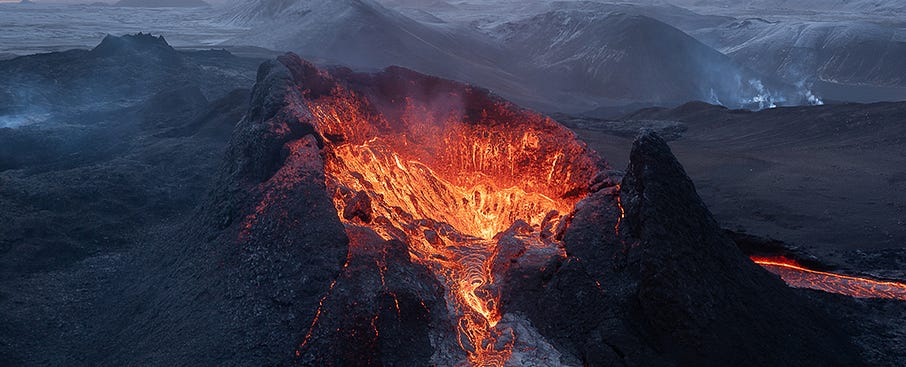In this week’s news article, we’ll be taking a look into the news and headlines to pick out curious reports of the strange, weird, and mysterious. Anything from UFO news, to science advancements, the paranormal, and stuff labeled fringe science and fringe phenomena.
Here’s a summary of the latest episode, featuring a range of topics that promise to intrigue and mystify.
▶️ Watch Weekly Strange News Video Here
Classified Briefing on UAP Leaves Congress with More Questions

According to NewsNation — Members of Congress recently received a classified briefing on UAPs. The briefing, led by Thomas A. Monheim, the inspector general of the intelligence community, was a response to the growing interest in UAPs, especially after a surge in attention last year.
Democratic Rep. Raja Krishnamoorthi of Illinois expressed his concerns to NewsNation, stating, “I’m more concerned than I was going into the (secure meeting room), and I think that they have a lot of questions that remain unanswered.” This sentiment was echoed by other lawmakers who are calling for increased transparency regarding the government’s knowledge and encounters with UAPs.
Republican Rep. Andy Ogles of Tennessee voiced a common fear: “I think what most of the American people fear is true — that the government — there’s a concerted effort to conceal as much information as possible, both from Congress and to the general public.”
This was not the first briefing Congress has received on UAPs, but frustration remains, particularly with the Pentagon. Rep. Tim Burchett, R-Tenn., among others, has criticized what he perceives as a lack of transparency, suspecting that the Pentagon is withholding information.
While some lawmakers were satisfied with the information shared by the intelligence community, others, like Rep. Anna Paulina Luna of Florida, believe there is a movement to prevent further discovery about UAPs. “There is a movement, whether it’s within the Intelligence Community or not, to prevent us from finding out more information on this,” Luna said. She emphasized the need for continued investigation.
The briefing, while providing some insights, has evidently intensified the call for transparency and further investigation into UAPs, reflecting a growing curiosity and concern among both lawmakers and the public.
Pentagon’s New UAP Reporting System and Proposed Bill for Civilian Reporting

According to USAToday — Last year, the Pentagon took a significant step in addressing the growing interest in UAP by launching the AARO (All-domain Anomaly Resolution Office) website. This initiative was a direct response to official hearings where military pilots testified about encountering unexplained objects off the East Coast of the United States.
However, the Pentagon’s reporting system, while beneficial for military personnel, did not extend the opportunity for reporting to the general public, civilian pilots, or air crews. Recognizing this gap, Rep. Robert Garcia and Rep. Glenn Grothman have sponsored a new bill aimed at creating a reporting mechanism for civilian pilots as well.
“UAP transparency is incredibly important for our national security, which is why we need to create a space where those in aviation have the ability to report their findings and experiences,” stated Garcia. He emphasized that the bill represents a step forward in disclosure and provides a safe process for UAP reporting by civilian and commercial personnel.
Should the bill pass, it will also mandate the Federal Aviation Administration (FAA) to share any relevant information on these cases with the AARO for further investigation. Grothman highlighted the importance of this initiative, saying, “This bill empowers those on the frontline of our skies to contribute valuable intelligence regarding UAP sightings that can help ensure that potential threats are thoroughly investigated…”With the majority of Americans believing that the government has suppressed information on UAPs, our bipartisan effort highlights our need for transparency from the federal government regarding UAPs to better protect the safety and security of American citizens.”
NASA Postpones Moon Landing to 2026

Artemis Moon Landing Crew
NASA has announced a delay in its lunar missions, with the next human landing on the Moon now scheduled for no earlier than 2026, and a lunar orbit mission set for September 2025. This decision follows the recent cancellation of the uncrewed Peregrine Mission One, highlighting the complexities of deep space exploration.
Originally planned for 2024, the Artemis III Moon landing has been pushed back to ensure astronaut safety and mission success. NASA Administrator Bill Nelson emphasized the importance of addressing challenges and learning from each mission, stating, “We are adjusting our schedule… to give Artemis teams more time to work through the challenges.”
The delay reflects NASA’s cautious approach in the wake of the Peregrine mission’s loss and the historical context of space exploration, where significant delays are not uncommon. The focus remains on ensuring the safety of astronauts and the integrity of the missions, with NASA prioritizing thorough preparation over speed.
LA-Based Group Offers $$$ to Prove Paranormal Abilities

The Center for Inquiry Investigations Group (CFIIG) in Los Angeles is offering a $500,000 reward to anyone who can demonstrate paranormal abilities under scientific conditions, reminiscent of the famous Scole Experiment of the 1990s. This challenge follows in the footsteps of previous initiatives like the James Randi Educational Foundation’s $1 million challenge, aiming to scientifically validate claims of the supernatural.
The Scole Experiment, conducted between 1993 and 1998 in the UK, similarly sought to provide empirical evidence of paranormal phenomena. It was known for its rigorous approach to testing and documenting a range of supernatural occurrences under controlled conditions. The CFIIG’s challenge mirrors this scientific rigor, requiring participants to reliably demonstrate their abilities on demand, either online or in person.
The CFIIG challenge, with its emphasis on scientific validation, continues the legacy of the Scole Experiment, highlighting an ongoing interest in exploring and understanding paranormal phenomena through rigorous testing and documentation.
New Study on Exoplanet LHS 1140b Suggests Potential Water World

A recent study published in The Astrophysical Journal Letters on January 3 has brought attention to the exoplanet LHS 1140b, located in the constellation Cetus, approximately 50 light-years away from Earth. Discovered in 2017, LHS 1140b was initially believed to be a rocky planet 1.7 times wider than Earth. However, new analysis indicates that it might be a water world or possess an extensive atmosphere of light elements like hydrogen and helium, due to its lower than expected density.
Situated in the habitable zone of its star, LHS 1140b emerges as a prime candidate in the search for extraterrestrial life, particularly if it has surface water. The James Webb Space Telescope (JWST) is expected to play a pivotal role in uncovering the true nature of this exoplanet in the near future.
Charles Cadieux, an astronomy researcher and the study’s lead author, emphasizes the importance of finding water in the habitable zone, as it could signify potential habitability. Out of the more than 5,500 exoplanets discovered since 1992, only a handful have been identified as potentially habitable. The TRAPPIST-1 system, once considered a promising target for life, has yielded disappointing results from JWST observations, suggesting its planets might be barren due to the star’s high activity level.
In contrast, LHS 1140, being less active than TRAPPIST-1, offers a more stable environment for potential habitability. Despite its close orbit to its star, LHS 1140b is believed to be cooler than Earth. Researchers are planning to use JWST to investigate if LHS 1140b has an atmosphere or an abundance of water. Confirming it as a water world could lead to the first indirect detection of liquid water on an exoplanet, marking a significant milestone in astronomy.
Drilling into a Volcano: Iceland’s Bold Plan for Clean Energy

In a bold and innovative move, a team of researchers, led by the Krafla Magma Testbed (KMT) organization, is planning to drill into the side of a volcano in Iceland. This groundbreaking project aims to enhance our understanding of magma behavior and volcanic eruptions while potentially harnessing a virtually limitless source of clean energy.
Named after the Krafla volcanic caldera, this initiative is not the first of its kind. An earlier attempt to drill near a magma chamber inadvertently penetrated a magma vault, halting the drilling due to extreme heat but demonstrating that such activities do not trigger eruptions.
The upcoming project, set to begin in 2026, faces significant challenges, including the development of drills and sensors capable of withstanding the extreme conditions inside magma chambers. If successful, this drilling could offer unprecedented insights into the formation of continental crust and improve eruption predictions.
Furthermore, a second drilling project planned for 2028 aims to exploit the intense heat and pressure of the underground environment to generate clean energy. This ambitious endeavor represents a unique opportunity to explore and potentially utilize one of nature’s most formidable forces.
▶️ Watch Weekly Strange News Video Here
Access all of Cristina Gomez’ links - click here

Comments & Upvotes